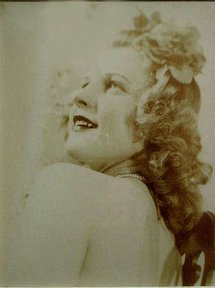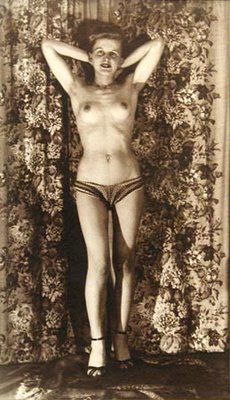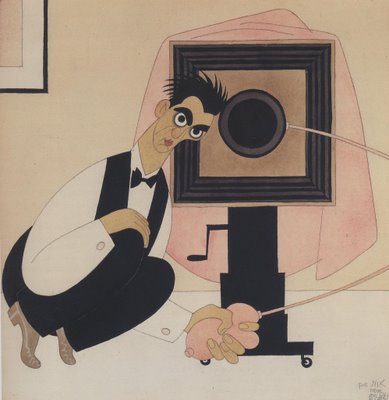
Eugene von Bruenchenhein (1910-1983) was a small, quiet man who worked the night shift at a bakery near Milwaukee, Wisconsin. He and his wife Marie lived a humble life in a tiny home where Eugene painted and wrote poetry.

Eugene and Marie mostly kept to themselves. The neighbors never guessed that inside their meager shack, Eugene and Marie lived as a god and goddess.

The couple adored each other and during their forty year marriage enjoyed a rich fantasy life together. Eugene made crowns and elaborate jewelry for Marie out of clay which he dug himself. He used the bakery oven as a kiln to fire his creations late at night when no one was watching. He also made tiny thrones out of chicken bones painted gold.

Eugene's paintings and sculptures were pretty mediocre, and his poetry was no better. His real art was his several thousand pictures of Marie as his queen, muse, glamour girl, goddess, siren. He scavenged floral print wallpaper or scraps of fabric to create exotic backdrops for her. He adorned her in sarongs and togas and bikinis. Many of these photos he later colored by hand.


Eugene created montages with Marie's face in the sky, in the sun, and in the trees.

I don't imagine that many housewives in Milwaukee during the 1940s and 1950s spent their days posing for their husbands in nothing but a tiara. But then, Eugene and Marie don't seem to have felt constrained by the time and place where they lived. Their love was transcendent.


Eugene's artistic devotion to Marie reminds me of the line by that great poet of love, Walt Whitman:
I will leave all,Whatever you may think about the song of Eugene von Bruenchenhein, there are definitely worse ways to live.
and come and make the hymns of you.


















